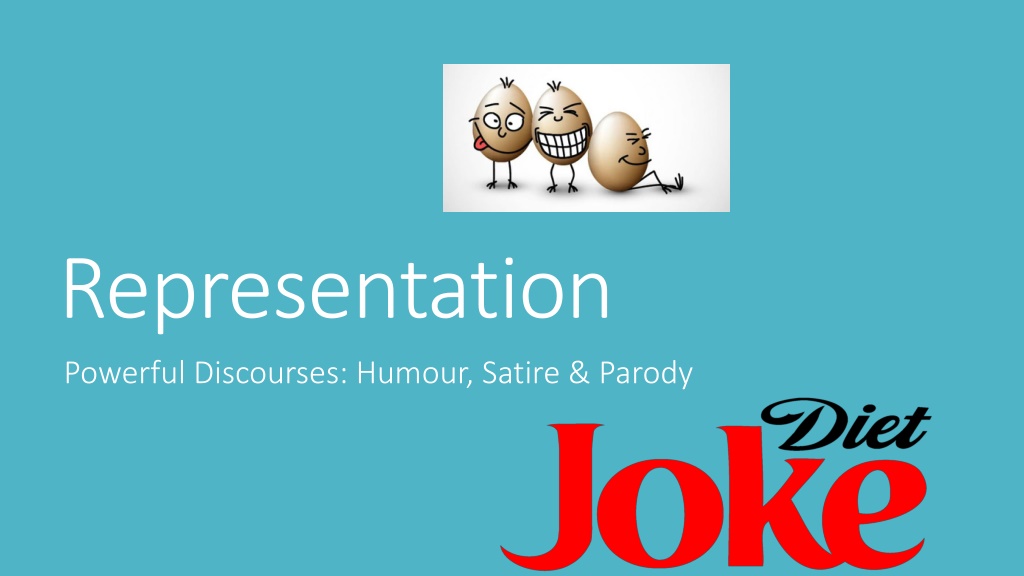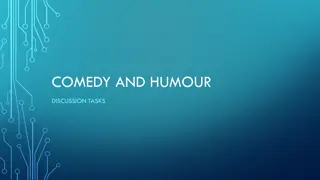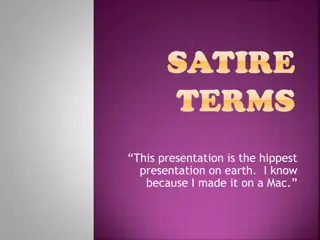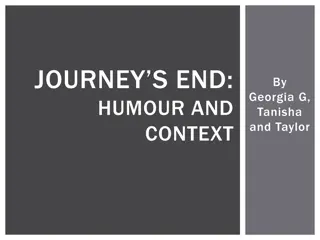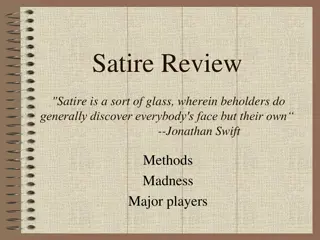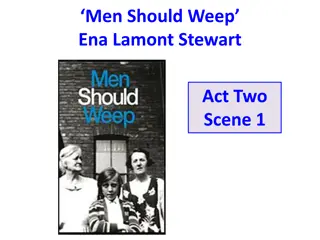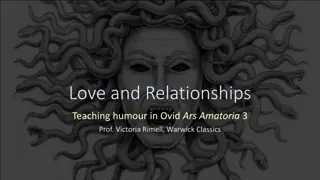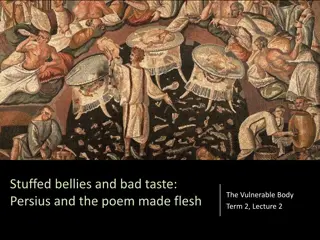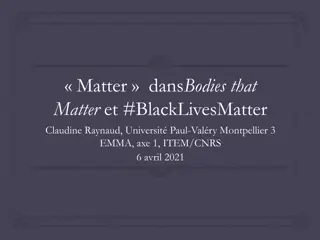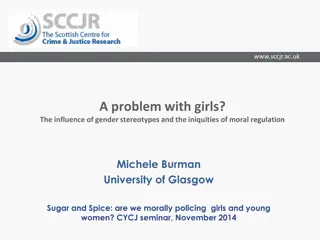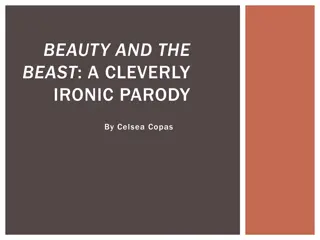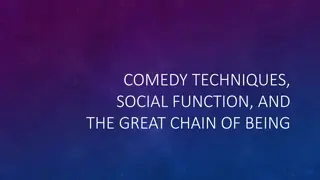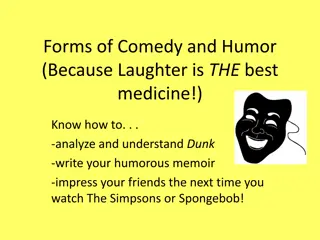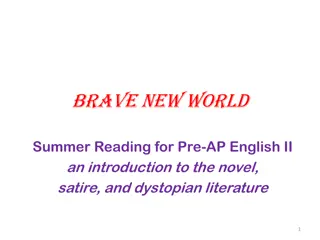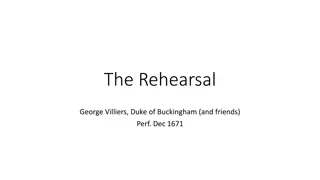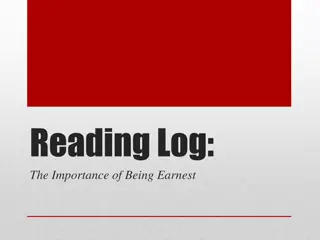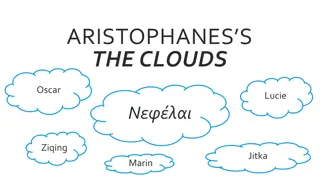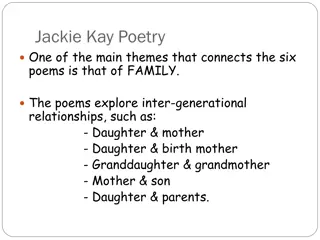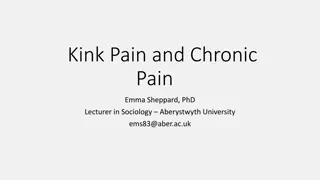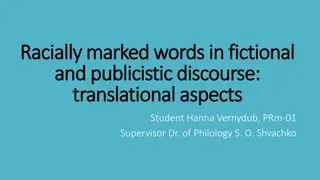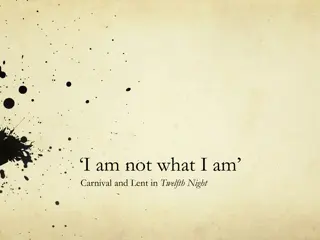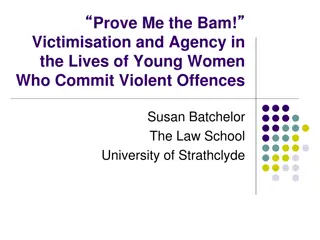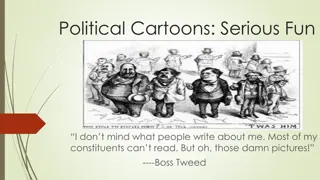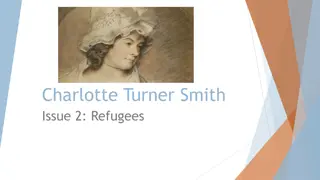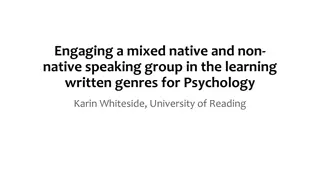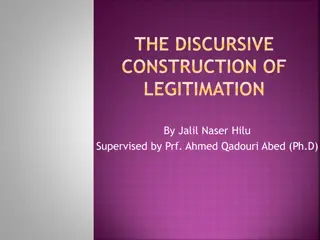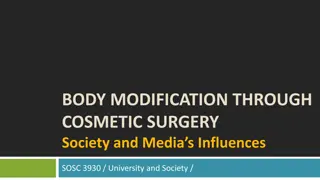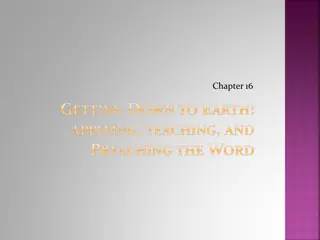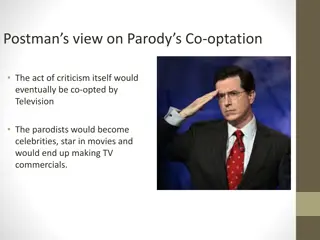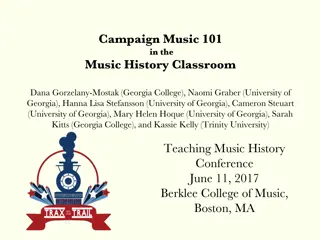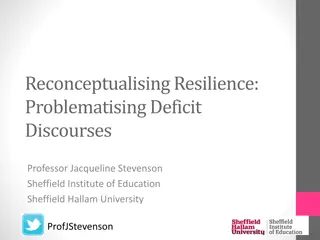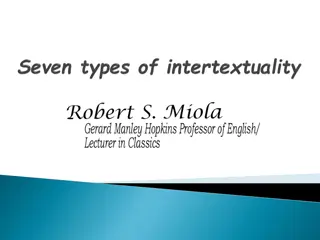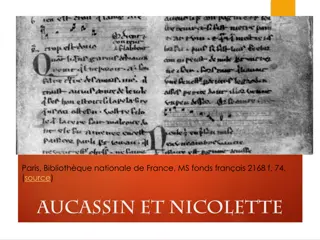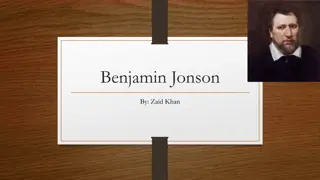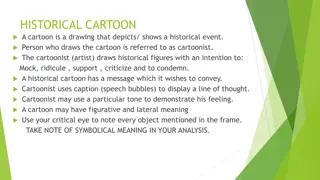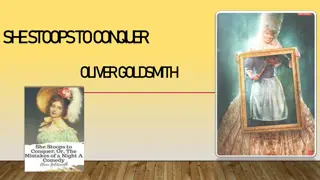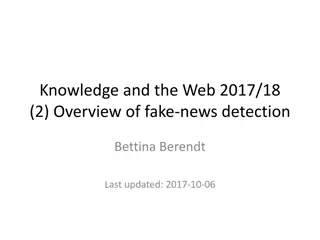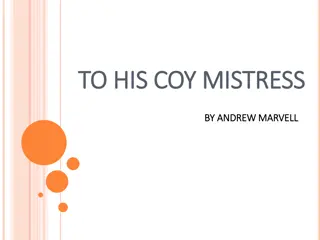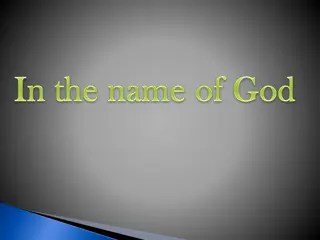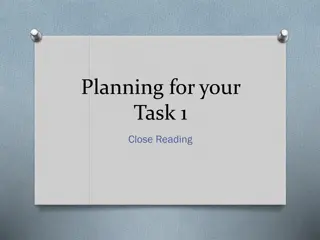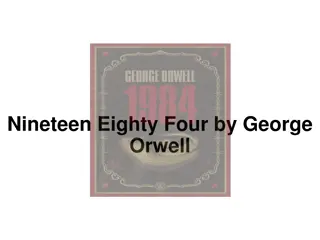Exploring Humour, Satire, and Parody in Powerful Discourses
Delve into the definitions of humour, satire, and parody, and examine how these elements are utilized in powerful discourses. Compare speech features in speeches by Emmeline Pankhurst and a chocolate biscuit, and explore the different representations of humour in spoken and written texts. Discover how humour is conveyed through phonology and semantics, with examples of word play and linguistic devices. Uncover the nuances of humour in various contexts through this insightful exploration.
Download Presentation

Please find below an Image/Link to download the presentation.
The content on the website is provided AS IS for your information and personal use only. It may not be sold, licensed, or shared on other websites without obtaining consent from the author. Download presentation by click this link. If you encounter any issues during the download, it is possible that the publisher has removed the file from their server.
E N D
Presentation Transcript
Representation Powerful Discourses: Humour, Satire & Parody
Try to define the following terms: Try to define the following terms: Humour: Humour: the quality of being amusing or comic, especially as expressed in literature or speech Satire: Satire: the use of humour, irony, exaggeration, or ridicule to expose and criticize people's stupidity or vices, particularly in the context of contemporary politics and other topical issues Parody: Parody: an imitation of the style of a particular writer, artist, or genre with deliberate exaggeration for comic effect
Speech comparison: Speech comparison: Now compare the chocolate biscuit speech chocolate biscuit speech with the Emmeline Pankhurst speech identify which key language features language features are used. Emmeline Pankhurst speech to
How is humour represented differently in How is humour represented differently in spoken and written texts? spoken and written texts?
How humour is represented through How humour is represented through phonology: phonology: Many jokes are based on the fact that there can be two possible interpretations of the same group of sounds e.g. What s black and white and re(a)d all over? A newspaper. . This is because red/read is a homophone homophone. Ambiguities can be caused by the way that words are stressed hand you should kiss can have multiple meanings. Equally, Q: How do you make a cat drink? A: Easy, you put it in the liquidiser. (How you interpret this is how you interpret the word classes of the final two words). Inappropriate words Inappropriate words that sound appropriate because of the number of syllables/vowels they have and connotations of certain etymologies. Mrs Malaprop, a character from The Rivals, doesn t use words with quite the right meaning. This is called a malapropism malapropism. Delboy also uses inappropriate French words in Only Fools and Horses. Spoonerisms Spoonerisms (named after Rev. William Archibald Spooner) is where the initial sounds of words are mixed up. Such a device can be deliberately used for humour which suggests but does not articulate a taboo word e.g. He is a shining wit. . This could also be suggested for the brand name FCUK. stressed and by their intonation intonation e.g. It s not my
How humour is represented through How humour is represented through semantics: semantics: Polysemy Polysemy refers to the phenomenon of words having various, related meanings. Unintentional humour can occur in translations e.g. a notice in the toilet of an Italian train gave instructions for its use: Deeply depress the stud. English speakers rarely use the literal meaning of depress (to press down) so the metaphorical sense is the first to be understood, particularly as it occurs before stud , which can mean both a knob or a young man noted for his sexual prowess . Idioms Idioms a group of words that should be regarded as a single unit as their meaning cannot be worked out from the constituent parts e.g. go bananas. There is ambiguity if the group of words can be interpreted both as an idiom and as individual words e.g. When down in the mouth mouth, remember Jonah. (meanings of miserable and in the mouth of a whale). Connotations/collocations Connotations/collocations words can be grouped as belonging to a field of meaning but have different connotations. E.g. snow is similar to slush but the former has connotations of purity and the latter has connotations of unpleasantness and dirt: I m as pure as the driven slush. (Tallulah Bankhead) down in the
How humour is represented through How humour is represented through grammar: (morphology) grammar: (morphology) People s instinctive knowledge of the ways that morphemes exploited in jokes which point out the possible ambiguities. The word ish as a suffix has been used to indicate the sense of slightly e.g. hungryish Certain suffixes suffixes when applied to other words don t work in quite the same way causing confusion and therefore humour: What s a baby pig called? A piglet. So what s a baby toy called? A toilet. Compound words Compound words formed from 2 free morphemes, the order is significant and they can t be reversed without altering the meaning e.g. an overpass is very different to Passover. Equally, with the following example, Have you heard the one about the main who bought a paper shop? It blew away. paper shop can either mean shop made out of papers or shop that sells papers . morphemesare used to form meanings can be
How humour is represented through How humour is represented through grammar: (word class) grammar: (word class) Prepositions Prepositions often occur as part of fixed phrases or idioms which cannot be understood by the meaning of the individual parts e.g. in an episode of the sitcom, Friends, there was an exchange between Ross and Rachel on the brink of a relationship and Rachel leaves a message on Rachel s answerphone saying You said you were over over me. When were you ever under under me? Phrasal verbs Phrasal verbs some verbs in English are not single words but include a following preposition (or particle) as the unit of sense e.g. Note the difference between I ran a hill vs. I ran up ran up a bill. These can be manipulated to form ambiguities in jokes: When is a car not a car? When it turns into turns into a garage. ran up
How humour is represented through How humour is represented through grammar (syntax): grammar (syntax): Modification Modification ambiguities can often occur in headlines because they are abbreviated and occur before the context. Although such puns are often deliberately used to catch attention, they are sometimes unintentional. E.g. Squad Helps Dog Bite Victim. Such examples are not simply a case of individual words having double meanings (polysemy polysemy) but the fact that there are two possible ways to group the words in relation to each other. Often, there can be multiple interpretations based on which modifier modifier goes with which head noun head noun e.g. For sale: Mixing bowl set designed to please a cook with round bottom for efficient beating. Phrasal verbs Phrasal verbs some verbs in English are not single words but include a following preposition (or particle) as the unit of sense e.g. Note the difference between I ran a hill vs. I ran up ran up a bill. These can be manipulated to form ambiguities in jokes: When is a car not a car? When it turns into turns into a garage. ran up
Write your own parody of a childrens book Write your own parody of a children s book: think about the features you will need
